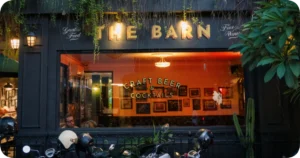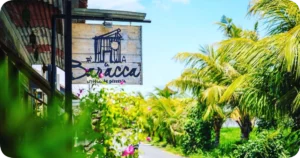If you’re looking for the perfect escape from Bali’s bustling tourist hotspots, Sidemen Valley is the answer. Tucked away in East Bali, this breathtaking region is often referred to as the “Old Bali,” where time slows down, and nature takes center stage. Here, lush rice terraces stretch as far as the eye can see, towering waterfalls crash into crystal-clear pools, and ancient temples stand as silent witnesses to centuries of tradition.
While most travelers flock to Ubud or Canggu, Sidemen remains an unspoiled paradise, untouched by mass tourism. So, rest assured whether you’re a nature lover, a cultural enthusiast, or simply someone seeking tranquility, Sidemen Valley has something for you.
In this guide, we’ll take you through five Sidemen Valley hidden gems that offer unique and unforgettable experiences. But first, let’s get to know this stunning region a little better!
Everything You Need to Know About Sidemen Valley, Bali?
Before exploring Sidemen Valley’s hidden gems, it’s important to understand what makes this region so unique. From its stunning geography and tropical climate to its rich local culture and remote location, here’s everything you need to know about this serene Balinese paradise.
Where is Sidemen Valley?
Sidemen Valley is located in East Bali, about 1.5 to 2 hours from Ubud or Canggu. This serene area is nestled at the foot of Mount Agung, Bali’s tallest and most sacred volcano.
Geography & Climate
Sidemen Valley boasts lush rice terraces, dense tropical forests, and gently rolling hills, creating a stunning natural landscape. Positioned at an elevation of approximately 300–500 meters above sea level, the region enjoys a cooler and more refreshing climate compared to Bali’s southern coastal areas. Here, the dry season (April to October) brings warm, sunny days, perfect for outdoor exploration, while the wet season (November to March) sees occasional rainfall, enhancing the valley’s greenery and making the scenery even more vibrant.
Local Life & Culture
Because of its climate and geographic location, Sidemen is home to small farming communities that practice traditional Balinese agriculture. Locals grow rice, fruits, and vegetables, and many families still engage in handwoven textile production—a craft that has been passed down for generations. This said, unlike the touristy hubs of Bali, Sidemen offers an authentic cultural experience, where life moves at a slower pace and spiritual traditions remain deeply ingrained in daily life.
Own your COCO property in paradise with benefits for life
- +200 properties in construction
- +250 properties in full operation
- Pay 20% of your property straight from rental profit
Best Time to Visit Sidemen Valley, Bali
Sidemen Valley is a year-round destination, but the best time to visit depends on what you’re looking for:
- April to October (Dry Season): Ideal for outdoor activities like hiking, sightseeing, and exploring temples. This is also the peak season, so expect slightly higher prices.
- November to March (Wet Season): Offers a more peaceful experience, as there are fewer tourists. While occasional rains occur, they usually pass quickly, leaving behind lush, green landscapes.
- Rice Harvest Seasons (May & September): If you want to see golden rice fields at their most photogenic, plan your visit around these months.
5 Hidden Gems to Explore in Sidemen Valley
Sidemen Valley is a treasure trove of hidden gems, offering a perfect blend of natural beauty, cultural heritage, and serene landscapes. Whether you’re looking for a peaceful village escape, an exhilarating outdoor adventure, or an immersive experience in Balinese traditions, these five unique attractions are definitely must-visit spots during your time in Sidemen, Bali.
1. Sidemen Village: The Heart of East Bali
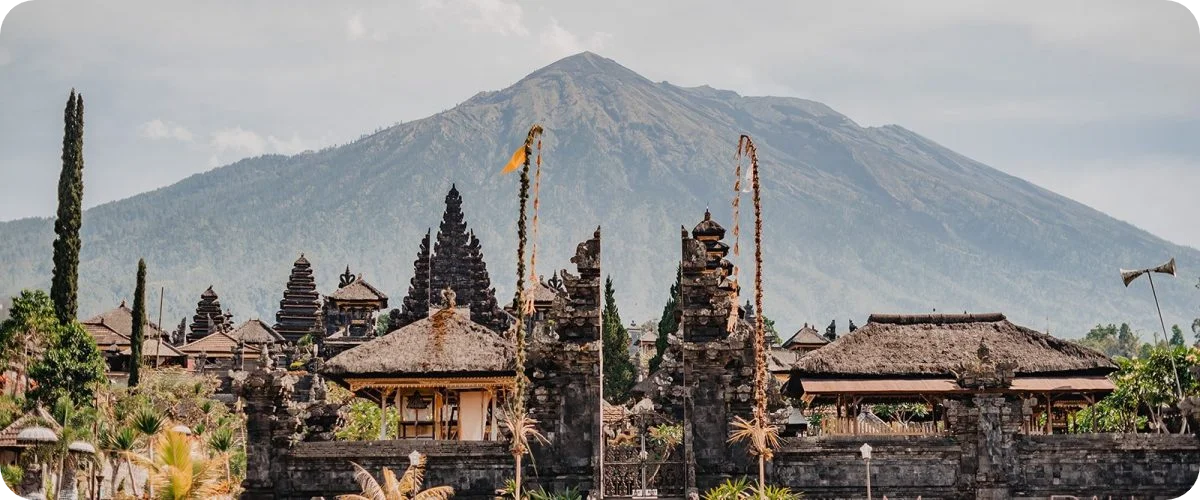
Sidemen Village is the heart and soul of the valley, where life moves at a relaxed pace, and Bali’s traditional way of life remains untouched by commercialization. Walking through the village, you’ll see endless stretches of vibrant green rice paddies, where local farmers still use ancient irrigation techniques known as Subak, a UNESCO-recognized practice that dates back centuries. The village is also home to local markets, where you can find handmade crafts, traditional snacks, and fresh produce straight from the farms.
A highlight of the village is the Jembatan Kuning (Yellow Bridge), an iconic landmark connecting Sidemen to the surrounding villages. The bridge itself is a simple yet scenic structure, offering a breathtaking panoramic view of the valley, with Mount Agung towering in the distance.
For those planning a visit, the best times are early morning for sunrise or late afternoon for sunset, when the sky is painted in golden and pink hues. The bridge is also a fantastic photography spot, capturing the contrast between the vibrant greenery and the soft golden glow of the rice fields.
- Location: Jalan Semarapura-Karangasem, Karangasem, Bali 80864
- Entrance Fee: Free, but a donation to preserve the village is encouraged (IDR 10,000–20,000 is enough)
- Opening Hours: Public visit are only allowed from 7 AM to 10 PM
2. Iseh Old Village: Bali Back in Time
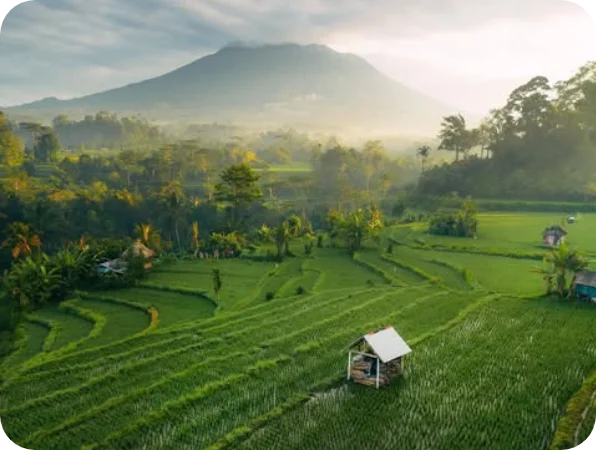
For those seeking to experience Bali as it was decades ago, Iseh Old Village is a hidden gem that has remained virtually unchanged for generations. The village offers a glimpse into authentic Balinese life, where traditional houses with thatched roofs, intricate stone carvings, and sacred shrines stand in harmony with the surrounding lush jungles and terraced rice fields.
One of the most famous figures associated with Iseh is Walter Spies, a German artist and musician who lived in the village in the 1930s. Spies was mesmerized by Iseh’s natural beauty and peaceful atmosphere, capturing its essence in his paintings and writings. Even today, visitors describe Iseh as a living painting, where Mount Agung dominates the horizon, mist rolls over the fields in the morning, and the sounds of birds and flowing water create a meditative ambiance.
But remember: there are no major tourist developments here—no luxury resorts, no bustling cafes, just pure, unspoiled nature. Walking through the village, you’ll pass small farming communities, rice terraces carved into the hillsides, and locals engaging in age-old traditions. Overall, it’s an ideal spot for those who want to disconnect from modern life and immerse themselves in Bali’s rich heritage.
- Location: Karangasem, Banjar Iseh, Sindu Wati, Kec. Sidemen, Kabupaten Karangasem, Bali 80864
- Entrance Fee: IDR 10,000 ($0.60)
- Opening Hours: Always open
3. Telaga Waja River: Bali’s Best White-Water Rafting Spot
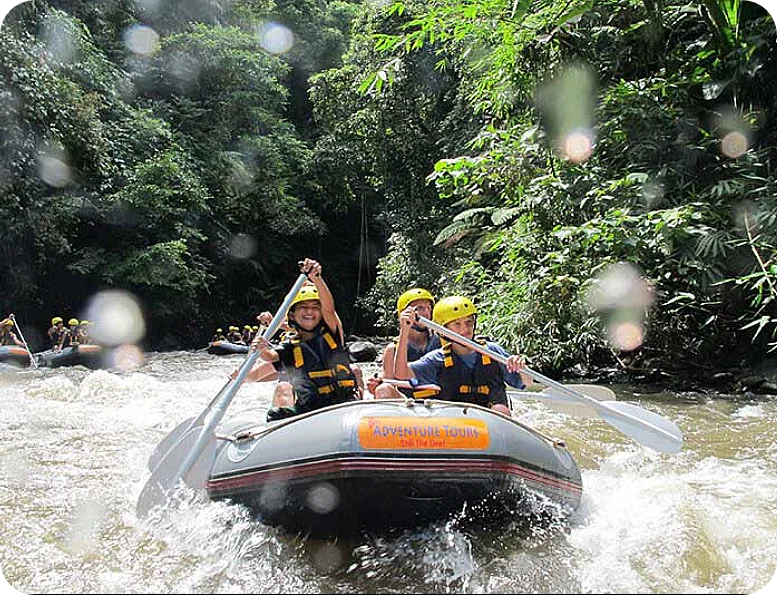
Telaga Waja River is one of Bali’s most thrilling adventure destinations, renowned for its exhilarating white-water rafting experience. The river runs through East Bali’s lush jungles, cascading waterfalls, and dramatic gorges, creating the perfect setting for an adrenaline-pumping ride.
Rafting here is classified as Class III-IV, meaning it offers a great mix of rapids that are fun and challenging but still suitable for beginners. Most rafting trips last 2-3 hours, covering around 16 kilometers of river, with exciting twists, turns, and even a 4-meter-high waterfall drop to keep things exciting. Along the way, you’ll pass through hidden caves, hanging vines, and ancient Balinese shrines, making the journey as scenic as it is adventurous.
Even if you’re not into extreme sports, Telaga Waja is still worth visiting. The riverbanks are lined with picturesque rice terraces, small villages, and jungle trails, making it a perfect place for a peaceful riverside walk or a picnic with a view. For the best experience, visit during the dry season (April to October) when the water is clear, and the currents are just right for rafting.
- Location: Rendang, Karangasem
- Entrance Fee: No official entrance fee to the falls, but rafting tours start at IDR 485,000 ($30) to IDR 815,000 ($50) per person, including safety equipment, a guide, and transportation to the starting point.
Opening Hours: 7:00 AM – 5:00 PM for river rafting; falls is open until 10 PM for non-rafting activities
Transform Your Life With a Lifestyle Investment
Take control of your future by owning property in Bali. It’s not just an investment; it’s a lifestyle upgrade that balances work, leisure, and global living.
4. Pura Bukit Sangkan Gunung (Bukit Temple)
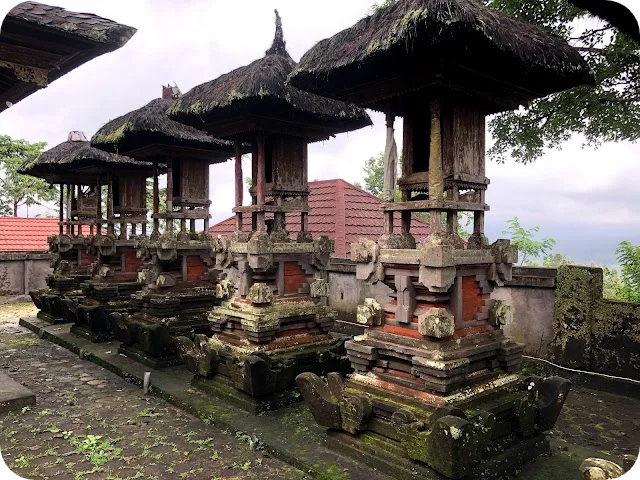
For travelers looking for a peaceful spiritual retreat away from the crowds, Pura Bukit Sangkan Gunung is a hidden sanctuary waiting to be discovered. This hilltop temple offers breathtaking views over Sidemen Valley and is one of the most tranquil temples in Bali, making it an ideal place for meditation, reflection, and photography.
Reaching the temple requires climbing a long staircase, which is an adventure in itself. As you ascend, you’ll pass traditional Balinese gates, stone-carved statues, and small shrines, all leading up to a sacred space where you can truly appreciate the silence and serenity of the valley below. Unlike other famous temples in Bali, Pura Bukit Sangkan Gunung is rarely crowded, allowing visitors to fully embrace the temple’s peaceful energy without distraction.
For the best experience, visit early in the morning, when the mist hovers over the valley, creating an almost mystical atmosphere. Sunsets are equally stunning, with the sky casting a warm glow over the temple grounds. If you’re interested in Balinese spirituality, history, or simply looking for a breathtaking viewpoint, this hidden temple is well worth the climb.
- Location: Sangkan Gunung, Sidemen, Karangasem Regency, Bali 80864
- Entrance Fee: Free (donations are welcome)
- Opening Hours: 8:00 AM – 6:00 PM
5. Sidemen Valley Traditional Weaving Plants
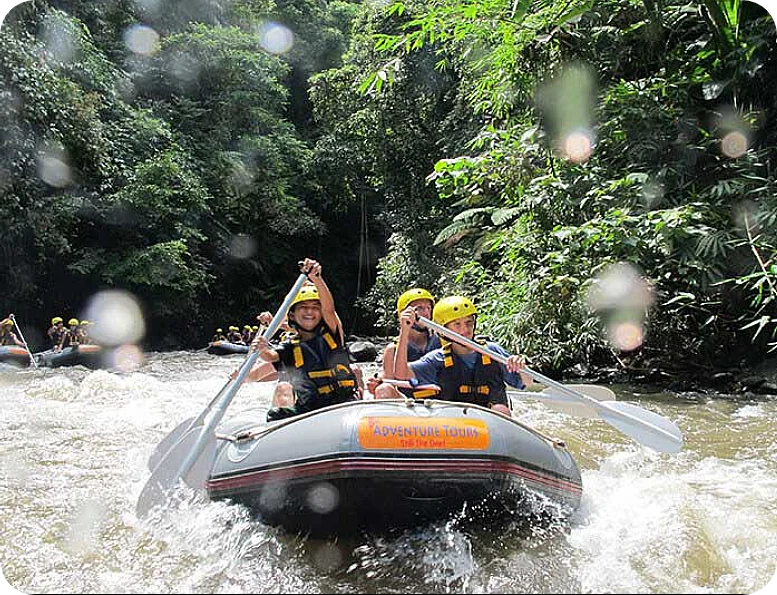
Lastly, Sidemen is renowned for its traditional textile industry, particularly Songket and Endek fabrics, which are deeply embedded in Balinese culture. These fabrics are handwoven using intricate techniques passed down through generations and are often used in ceremonial attire, temple offerings, and royal garments.
There are several weaving workshops in Sidemen where visitors can see artisans at work:
- Pelangi Weaving: Specializes in Songket textiles, known for their shimmering gold and silver threads.
- Arta Nadi Weaving: Produces hand-dyed Endek fabrics, featuring bold geometric patterns.
- Swastika Weaving: A family-run business preserving the art of Batik hand-painting and traditional looms.
At these workshops, visitors can watch weavers work on traditional wooden looms, learn about the complex dyeing process, and even try weaving a piece of fabric themselves. For those looking to take home a unique souvenir, handmade textiles are available for purchase, each carrying the soul and artistry of Balinese craftsmanship.
- Location: Various workshops in Sidemen
- Entrance Fee: Free (small fee for workshops)
- Opening Hours: 9:00 AM – 5:00 PM
Other Unique Things to Do in and Near Sidemen Valley
Beyond its hidden gems, Sidemen Valley also offers plenty of unique experiences that immerse visitors in nature, spirituality, and authentic Balinese culture. Here are some of the best experiences you shouldn’t miss:
Mount Agung: Bali’s Tallest Volcano
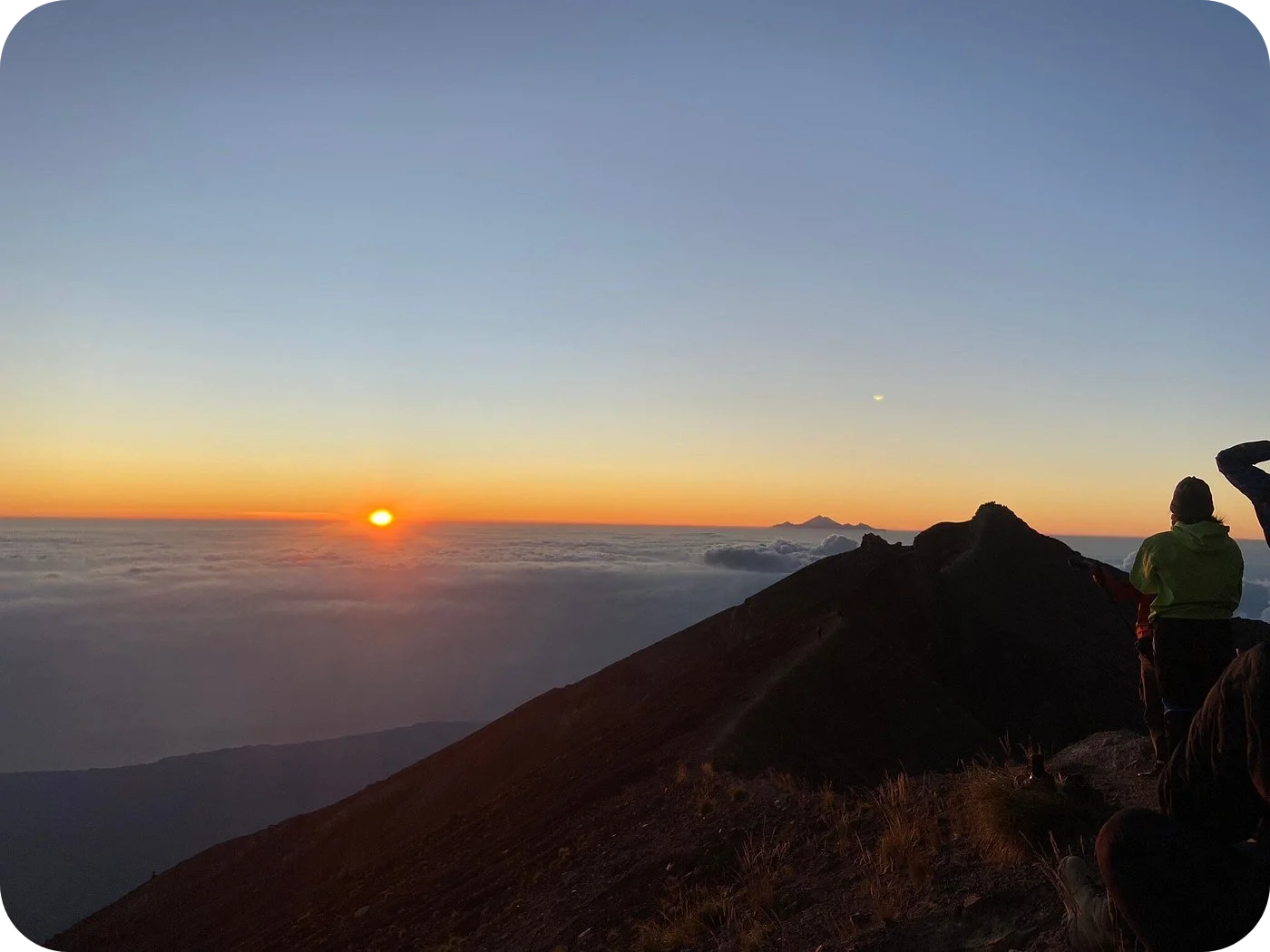
For adventurous travelers, hiking Mount Agung is a once-in-a-lifetime experience. As Bali’s highest and holiest volcano, standing at 3,031 meters (9,944 feet), Mount Agung dominates the landscape and is considered the spiritual center of the island. Balinese Hindus believe it is the home of the gods, and many important religious ceremonies take place on its slopes, particularly at Pura Besakih, Bali’s largest and most sacred temple.
Hiking to the summit is a serious challenge and requires a good level of fitness. There are two main routes:
- Pura Besakih Route: The longest but most scenic (approx. 6-8 hours one way).
- Pasar Agung Temple Route: A shorter but steeper trail (approx. 3-5 hours one way).
Most hikers start at midnight to reach the peak by sunrise, where jaw-dropping panoramic views await. On a clear day, you can see Mount Rinjani in Lombok, the Nusa Islands, and even parts of Java. Given the difficulty and the sacred nature of the climb, hiring a local guide is mandatory. Also, note that the volcano is occasionally closed due to religious ceremonies or volcanic activity, so check in advance before planning your hike.
- Starting Points: Pura Besakih or Pasar Agung Temple
- Entrance Fee: Starting from IDR 815,000 ($50) per person for guided hikes
Best Time to Hike: April to October (start at midnight for sunrise)
why investors choose
coco development group?

Passive income on full auto pilot
Profit Maximization
We do not just put your property on Airbnb hoping for a guest to book it. More than 40% of our bookings comes today through our own medias, a strong community and a digital and data driven management approach.
A Convenient and fast payment system
The investors receive net profits currency that is convenient for them. we transfer the money once every three months
No need to handle taxes
High Liquidity
Fast Payback
Oceanside villas in Bali are in High demand for daily rentals. You will earn about 5000 USD per month
Besakih Temple: The ‘Mother Temple’ of Bali
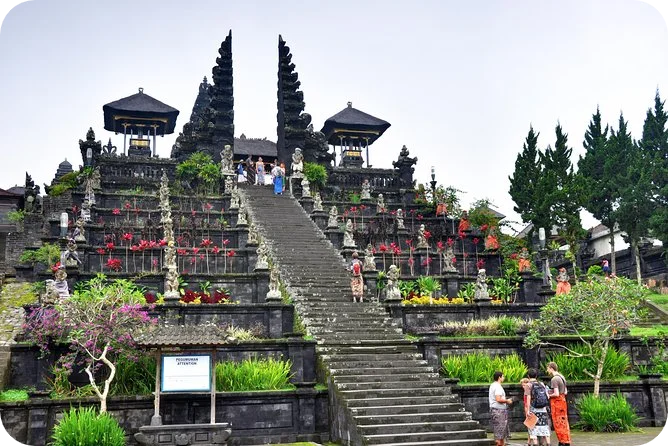
Perched on the southwestern slopes of Mount Agung, Pura Besakih is the most important, largest, and holiest temple complex in Bali. It consists of 23 separate temples, the largest being Pura Penataran Agung, dedicated to the supreme Hindu god, Shiva. Many of these temples date back over 1,000 years and remain a major site of Hindu worship.
Unlike other temples in Bali, Pura Besakih is not just a tourist attraction—it is an active place of worship where local Hindus conduct daily prayers and elaborate ceremonies. One of the best times to visit is during the Odalan festival, which occurs every 210 days according to the Balinese calendar. During this time, the temple comes alive with vibrant processions, colorful offerings, and traditional performances.
The temple complex is vast, and a guided tour is highly recommended to understand the symbolism, history, and architecture of the site. Visitors should dress modestly, wearing a sarong and sash, which can be rented at the entrance. Be prepared for a bit of walking though, as the temple is built on terraces that ascend toward Mount Agung.
- Location: Besakih, Rendang, Karangasem Regency, Bali 80863
- Entrance Fee: IDR 60,000 ($4) for locals and IDR 150,000 ($9.20) for tourists (includes sarong rental)
- Opening Hours: 8:00 AM – 6:00 PM
Tenganan Village: A Unique ‘Bali Aga’ Settlement
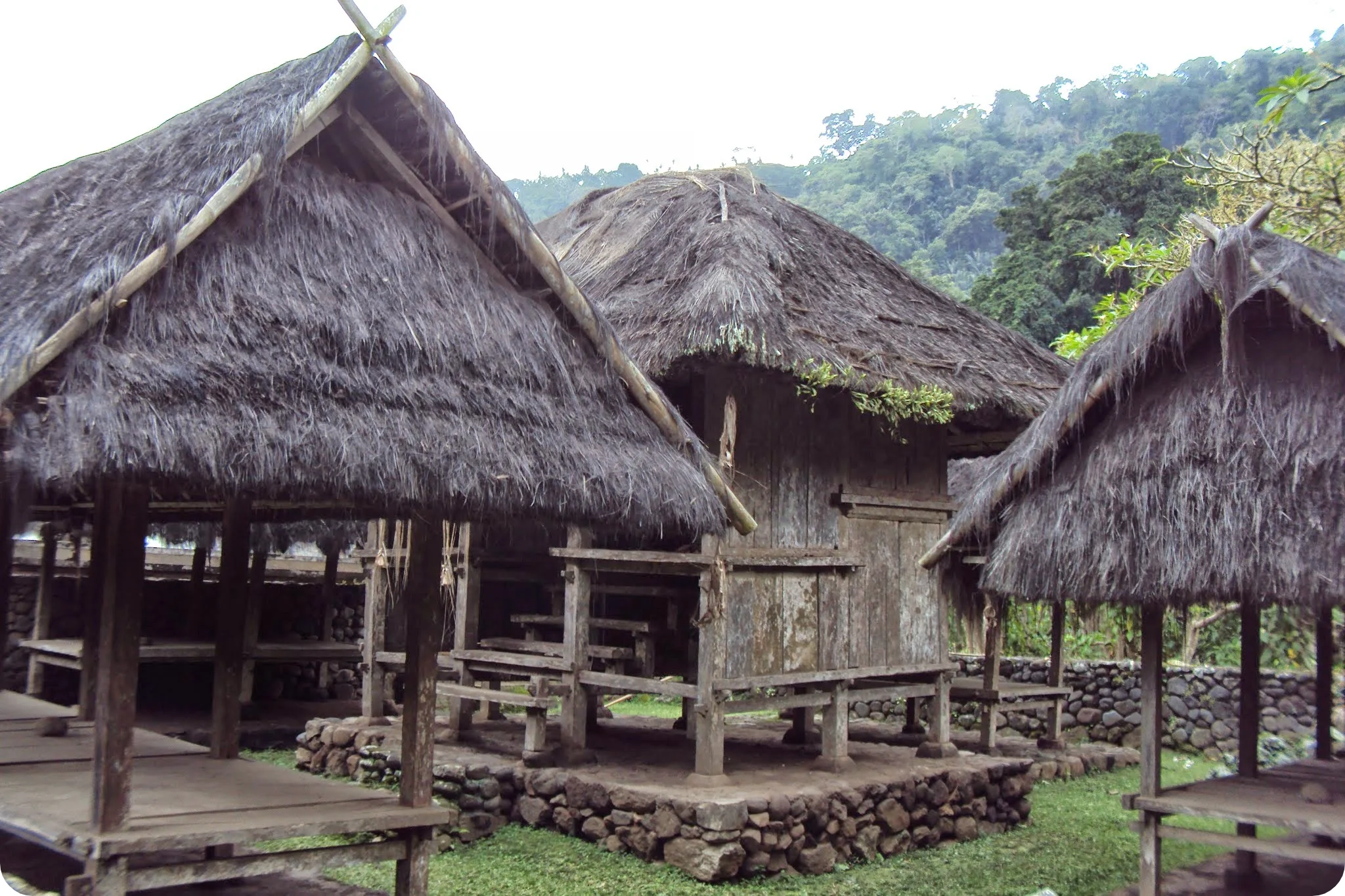
Tenganan is one of Bali’s most fascinating villages, home to the Bali Aga people, the island’s original inhabitants who have preserved their pre-Hindu customs, language, and traditions. Unlike other parts of Bali, which have adopted Hindu-Javanese influences, Tenganan has maintained a distinct way of life, making it one of the most unique cultural experiences in Bali. Here, visitors can observe local artisans at work, learn about the village’s unique calendar system, and experience the unparalleled hospitality of the Bali Aga people.
One of the most famous traditions of Tenganan is Geringsing Cloth, a rare double ikat fabric that is handwoven using ancient techniques. The weaving process is highly intricate, taking months or even years to complete a single piece. These Geringsing textiles are considered sacred and protective, often used in religious ceremonies and passed down through generations.
Another famous tradition is the Perang Pandan festival (usually in June or July), where young men engage in ritual combat using thorny pandan leaves as weapons. This symbolic battle is part of a rite of passage and a tribute to the god of war.
- Location: GHF8+CGG, Unnamed Road, Tenganan, Kec. Manggis, Kabupaten Karangasem, Bali 80871
- Entrance Fee: Donation-based
- Opening Hours: 8:00 AM – 6:00 PM
Sidemen Best Waterfalls: Gembleng & Jagasatru
Sidemen Valley is surrounded by hidden waterfalls, perfect for those who love off-the-beaten-path adventures. Here are two of the most magical ones:
Gembleng Waterfall: A Sacred Bathing Site
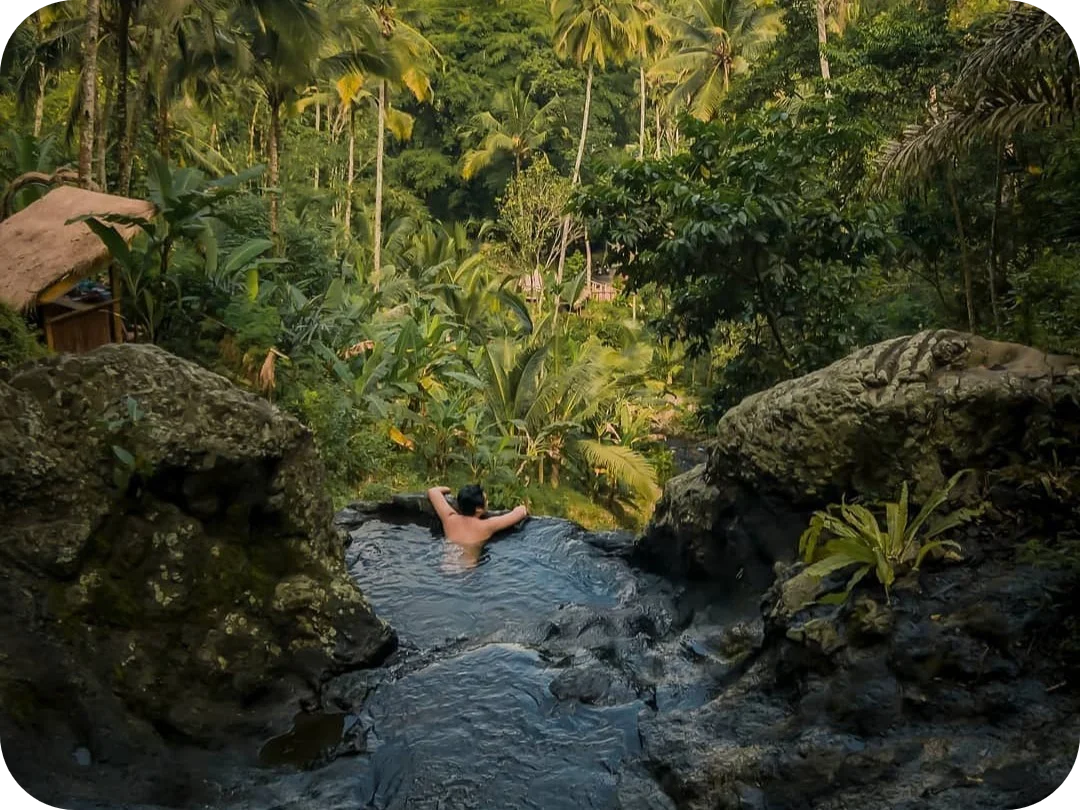
Tucked away in a remote jungle setting, Gembleng Waterfall is more than just a stunning cascade—it’s a holy site used by locals for Melukat, a traditional Balinese purification ritual. The waterfall features a series of natural rock pools, which resemble infinity pools overlooking the lush valley.
The best time to visit is early morning, when you’ll likely have the place to yourself. The short trek to the waterfall is easy, but the rocks can be slippery, so wear proper footwear.
- Location: Tri Eka Buana, Kec. Sidemen, Kabupaten Karangasem, Bali 80864
- Entrance Fee: Donation-based
- Opening Hours: 7:00 AM – 6:00 PM
Jagasatru Waterfall: A Hidden Hindu Sanctuary
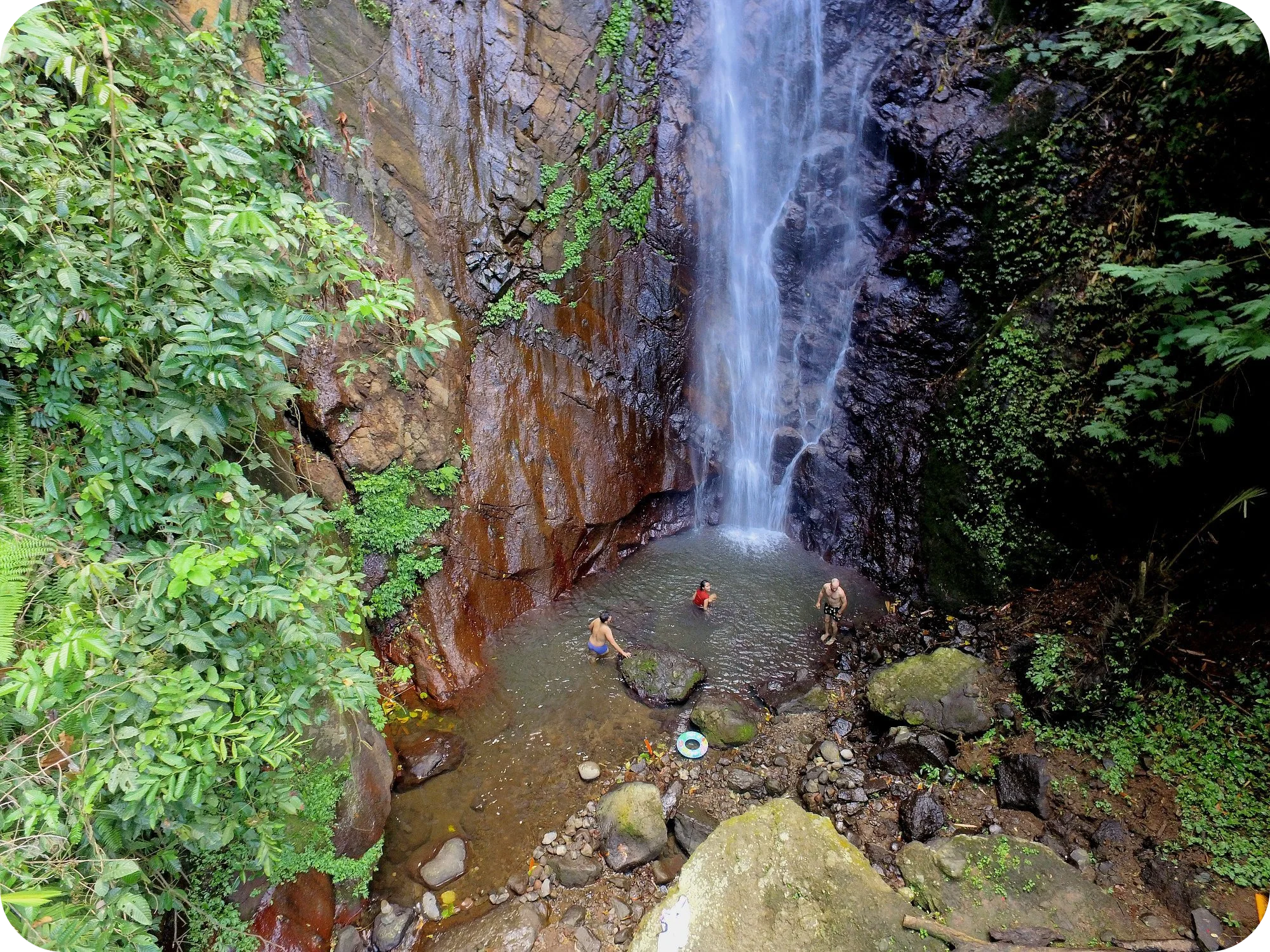
Jagasatru Waterfall is one of East Bali’s best-kept secrets. Unlike the more touristy waterfalls in Bali, this hidden spot remains serene and spiritual. The waterfall is also believed to be a holy site, and at its entrance, you’ll find a magnificent Hindu statue of Brahma.
The waterfall is surrounded by dense jungle and limestone cliffs, making it a great spot for nature lovers and photographers. The trek you’ll be required of is just of moderate difficulty, but it’s worth the effort, as you’ll be rewarded with a peaceful and secluded atmosphere.
- Location: East Duda, Selat, Karangasem Regency, Bali 80862
- Entrance Fee: Donation-based
- Opening Hours: 7:00 AM – 6:00 PM
Invest in Bali’s #1 Lifestyle Property Brand
From land acquisition to construction and property management, we handle every detail. You simply reap the rewards.
La Montagne Coffee
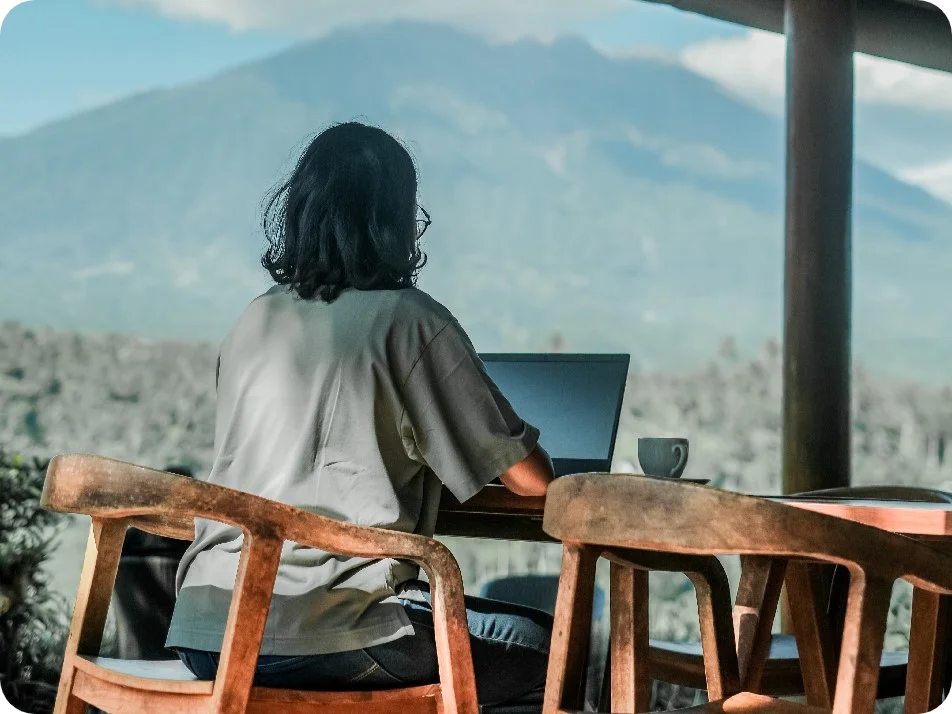
If you’re looking for a laid-back activity, La Montagne Coffee is the perfect place to relax while enjoying breathtaking views of Mount Agung. This hidden café specializes in Balinese coffee, including single-origin beans grown in the highlands of East Bali.
Perfect for coffee lovers, the café offers hand-brewed coffee, espresso drinks, and delicious homemade pastries, all served in an open-air setting overlooking the valley. It’s an excellent stop for travelers who want to unwind after a long day of exploring, read a book, or simply admire Bali’s natural beauty.
- Location: Jl. Surya Indah, Rendang, Kec. Rendang, Kabupaten Karangasem, Bali 80863
- Average Price: IDR 32,500 ($2) to IDR 81,500 ($5) per drink
- Opening Hours: 8:00 AM – 7:00 PM
Where to Eat in Sidemen Valley?
Sidemen Valley may not be as bustling as Ubud or Seminyak, but it offers some of the most authentic dining experiences in Bali. From traditional warungs serving home-cooked Balinese meals to hidden cafés with breathtaking rice terrace views, there’s something for every traveler.
- Warung Tirta Unda: A family-run eatery that serves fresh, organic Balinese dishes made with locally sourced ingredients. Their signature Bebek Betutu, a slow-roasted duck infused with Balinese spices, is a must-try for visitors. Vibe-wise, the restaurant offers a cozy open-air dining experience with stunning views of the surrounding rice terraces.
- Warung Deva: Warung Deva is well-known for its homemade Arak, a traditional Balinese rice liquor that can be enjoyed as a shot or in cocktails. The menu features classic local dishes such as Ayam Betutu (spicy chicken stew), Sate Lilit (minced fish skewers), and Nasi Campur (a combination of rice, vegetables, and meat). With its relaxed, family-run atmosphere, this warung provides an intimate and authentic dining experience.
- Café Amrita: An eco-conscious café that specializes in healthy, vegetarian, and vegan-friendly options. Guests can enjoy smoothie bowls, fresh salads, homemade granola, and cold-pressed juices, all made with fresh, organic ingredients. The café’s bohemian-style decor and peaceful rice field views make it a great spot for a leisurely breakfast or afternoon coffee.
- Asri Dining: Located within Samanvaya Resort, Asri Dining offers an upscale blend of Balinese and international cuisine in a fine-dining setting. Their grilled seafood platter and slow-cooked pork ribs are among the most popular dishes, carefully crafted with high-quality ingredients. With its candle-lit tables and open-air seating overlooking the valley, this restaurant provides a romantic and refined dining experience.
- Speeling Gaja: The go-to spot for those with a sweet tooth, offering a selection of handmade desserts and premium Balinese coffee. Their Pisang Rai, a Balinese banana dessert with coconut and palm sugar, and homemade coconut cake are highly recommended. This charming café provides a relaxing setting for an afternoon treat.
Where to Stay in Sidemen Valley?
Sidemen Valley offers a range of accommodations, from eco-friendly bamboo houses to luxurious hillside resorts. Whether you’re looking for a serene retreat in nature or an upscale villa with modern amenities, here are some of the best places to stay.
- Wapa di Ume Resort: A 5-star boutique resort designed for travelers seeking both luxury and peace in a stunning natural setting. The resort features private villas with infinity pools, providing breathtaking views of the surrounding rice paddies and mountains. Guests can also enjoy an on-site spa and wellness center, where traditional Balinese treatments are offered, as well as a fine dining restaurant serving a mix of local and international cuisine.
- Samanvaya: A luxurious adults-only retreat that caters to travelers looking for a quiet, nature-immersed getaway. The resort offers beautifully crafted bamboo bungalows, blending traditional Balinese design with modern comforts such as private plunge pools, outdoor rain showers, and panoramic valley views. With a focus on sustainability, Samanvaya is ideal for eco-conscious visitors who want to relax in a high-end yet environmentally friendly setting.
- Camaya Bali: Is known for its iconic bamboo houses, often featured in Instagram and travel magazines for their unique design and breathtaking surroundings. Set amidst endless Sidemen rice terraces, these eco-friendly lodges provide a one-of-a-kind jungle retreat, where guests can wake up to unobstructed sunrise views over Mount Agung. The open-air concept of the houses allows visitors to fully connect with nature, making it a perfect spot for a secluded and peaceful escape.
- Veluvana: Offers a one-of-a-kind treehouse experience, where guests can stay in elevated bamboo lodges overlooking Sidemen’s lush landscapes. These eco-friendly treehouses are designed with curved bamboo structures, open-air bedrooms, and suspended hammocks that provide stunning views of the surrounding rice paddies and mountains. Perfect for travelers looking for a peaceful retreat with a creative and sustainable design, Veluvana delivers a blend of adventure and tranquility.
FAQ
Absolutely! Sidemen offers a peaceful, authentic Balinese experience, far from the crowds of Ubud and Canggu.
Sidemen is about 1.5 – 2 hours by car from Ubud and Canggu.
Renting a scooter ($5-$7 per day) or hiring a private driver ($30-$40 per day) is the best way to explore.
There are very few ATMs, and many places prefer cash payments, so bring enough cash before arriving.
Yes! Sidemen is one of the safest and friendliest places in Bali, perfect for solo travelers seeking a relaxed, cultural experience.
Construction you can trust
We handle all the details – no hassle for you.

5 Years full warranty

20+ Finished developments in Bali by our team

25+ Years of shared experience
Uncover Sidemen Valley’s Hidden Gems Now!
Sidemen Valley is Bali’s hidden paradise, offering breathtaking landscapes, cultural richness, and tranquility that’s hard to find elsewhere on the island. Whether you’re hiking Mount Agung, exploring hidden waterfalls, learning traditional weaving, or enjoying a cup of coffee with a view, Sidemen provides an authentic and unforgettable experience.
So, if you’re looking for a peaceful escape, away from the tourist crowds, Sidemen Valley should be at the top of your Bali bucket list.

Rasmus Holst is a serial entrepreneur and Co-Founder of COCO Development Group, where he helps drive innovation and growth through strategic business development. He is also the Co-Founder of Estate of Bali and Regnskabshelten.dk, Denmark’s fastest-growing accounting firm, which grew to 35 employees and generated $2.5M in turnover in 2023. Rasmus is passionate about building businesses that create long-term value and impact.











